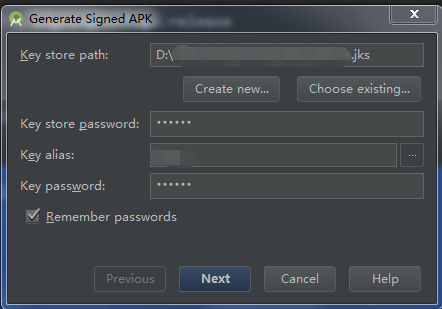編輯:關於android開發
<?xml version="1.0"?>
<LinearLayout android:orientation="vertical" android:layout_height="match_parent" android:layout_width="match_parent" xmlns:tools="http://schemas.android.com/tools" xmlns:android="http://schemas.android.com/apk/res/android">
<Button android:layout_height="wrap_content" android:layout_width="match_parent" android:text="獲取電池的信息" android:id="@+id/btn_battery"/>
<TextView android:layout_height="wrap_content" android:layout_width="match_parent" android:id="@+id/tv_battery"/>
</LinearLayout>
package com.example.yanlei.wifi;
import android.content.BroadcastReceiver;
import android.content.Context;
import android.content.Intent;
import android.content.IntentFilter;
import android.os.BatteryManager;
import android.os.Bundle;
import android.support.v7.app.AppCompatActivity;
import android.view.View;
import android.view.View.OnClickListener;
import android.widget.Button;
import android.widget.TextView;
public class MainActivity extends AppCompatActivity {
// 定義電池信息的按鈕
private Button btnBattery;
// 定義顯示電池信息的textview
private TextView tvBattery;
@Override
public void onCreate(Bundle savedInstanceState) {
super.onCreate(savedInstanceState);
setContentView(R.layout.activity_main);
// 得到布局中的所有對象
findView();
// 設置對象的監聽器
setListener();
}
private void findView() {
// 得到布局中的所有對象
btnBattery = (Button) findViewById(R.id.btn_battery);
tvBattery = (TextView) findViewById(R.id.tv_battery);
}
// 設置對象的監聽器
private void setListener() {
btnBattery.setOnClickListener(listener);
}
OnClickListener listener = new OnClickListener() {
@Override
public void onClick(View v) {
// TODO Auto-generated method stub
switch (v.getId()) {
// 當前的音量
case R.id.btn_battery:
IntentFilter filter = new IntentFilter();
filter.addAction(Intent.ACTION_BATTERY_CHANGED);
registerReceiver(mBroadcastReceiver, filter);
break;
}
}
};
// 聲明廣播接受者對象
private BroadcastReceiver mBroadcastReceiver = new BroadcastReceiver() {
@Override
public void onReceive(Context context, Intent intent) {
// TODO Auto-generated method stub
String action = intent.getAction();
if (action.equals(Intent.ACTION_BATTERY_CHANGED)) {
// 得到電池狀態:
// BatteryManager.BATTERY_STATUS_CHARGING:充電狀態。
// BatteryManager.BATTERY_STATUS_DISCHARGING:放電狀態。
// BatteryManager.BATTERY_STATUS_NOT_CHARGING:未充滿。
// BatteryManager.BATTERY_STATUS_FULL:充滿電。
// BatteryManager.BATTERY_STATUS_UNKNOWN:未知狀態。
int status = intent.getIntExtra("status", 0);
// 得到健康狀態:
// BatteryManager.BATTERY_HEALTH_GOOD:狀態良好。
// BatteryManager.BATTERY_HEALTH_DEAD:電池沒有電。
// BatteryManager.BATTERY_HEALTH_OVER_VOLTAGE:電池電壓過高。
// BatteryManager.BATTERY_HEALTH_OVERHEAT:電池過熱。
// BatteryManager.BATTERY_HEALTH_UNKNOWN:未知狀態。
int health = intent.getIntExtra("health", 0);
// boolean類型
boolean present = intent.getBooleanExtra("present", false);
// 得到電池剩余容量
int level = intent.getIntExtra("level", 0);
// 得到電池最大值。通常為100。
int scale = intent.getIntExtra("scale", 0);
// 得到圖標ID
int icon_small = intent.getIntExtra("icon-small", 0);
// 充電方式: BatteryManager.BATTERY_PLUGGED_AC:AC充電。 BatteryManager.BATTERY_PLUGGED_USB:USB充電。
int plugged = intent.getIntExtra("plugged", 0);
// 得到電池的電壓
int voltage = intent.getIntExtra("voltage", 0);
// 得到電池的溫度,0.1度單位。例如 表示197的時候,意思為19.7度
int temperature = intent.getIntExtra("temperature", 0);
// 得到電池的類型
String technology = intent.getStringExtra("technology");
// 得到電池狀態
String statusString = "";
// 根據狀態id,得到狀態字符串
switch (status) {
case BatteryManager.BATTERY_STATUS_UNKNOWN:
statusString = "unknown";
break;
case BatteryManager.BATTERY_STATUS_CHARGING:
statusString = "charging";
break;
case BatteryManager.BATTERY_STATUS_DISCHARGING:
statusString = "discharging";
break;
case BatteryManager.BATTERY_STATUS_NOT_CHARGING:
statusString = "not charging";
break;
case BatteryManager.BATTERY_STATUS_FULL:
statusString = "full";
break;
}
//得到電池的壽命狀態
String healthString = "";
//根據狀態id,得到電池壽命
switch (health) {
case BatteryManager.BATTERY_HEALTH_UNKNOWN:
healthString = "unknown";
break;
case BatteryManager.BATTERY_HEALTH_GOOD:
healthString = "good";
break;
case BatteryManager.BATTERY_HEALTH_OVERHEAT:
healthString = "overheat";
break;
case BatteryManager.BATTERY_HEALTH_DEAD:
healthString = "dead";
break;
case BatteryManager.BATTERY_HEALTH_OVER_VOLTAGE:
healthString = "voltage";
break;
case BatteryManager.BATTERY_HEALTH_UNSPECIFIED_FAILURE:
healthString = "unspecified failure";
break;
}
//得到充電模式
String acString = "";
//根據充電狀態id,得到充電模式
switch (plugged) {
case BatteryManager.BATTERY_PLUGGED_AC:
acString = "plugged ac";
break;
case BatteryManager.BATTERY_PLUGGED_USB:
acString = "plugged usb";
break;
}
//顯示電池信息
tvBattery.setText("電池的狀態:" + statusString
+ "\n健康值: "+ healthString
+ "\n電池剩余容量: " + level
+ "\n電池的最大值:" + scale
+ "\n小圖標:" + icon_small
+ "\n充電方式:" + plugged
+ "\n充電方式: " + acString
+ "\n電池的電壓:" + voltage
+ "\n電池的溫度:" + (float) temperature * 0.1
+ "\n電池的類型:" + technology);
}
}
};
@Override
protected void onPause() {
super.onPause();
// 解除注冊監聽
unregisterReceiver(mBroadcastReceiver);
}
}
 Android Studio多渠道打包,androidstudio打包
Android Studio多渠道打包,androidstudio打包
Android Studio多渠道打包,androidstudio打包本文所講述的多渠道打包是基於友盟統計實施的。 多渠道打包的步驟: 1、在AndroidManifes
 Android RecyclerView瀑布流布局添加Footer實現上拉加載
Android RecyclerView瀑布流布局添加Footer實現上拉加載
Android RecyclerView瀑布流布局添加Footer實現上拉加載 這篇文章應該是晚到了好幾個月,之前想寫,但是中途遇到了一些棘手的問題,無奈沒有去寫。寫
 用設計精美的閱讀指讀應用項目源碼,設計精美源碼
用設計精美的閱讀指讀應用項目源碼,設計精美源碼
用設計精美的閱讀指讀應用項目源碼,設計精美源碼 這個叫指讀的App設計簡約,走MD風格,UI設計很清新,我個人挺喜歡。 這次上傳的源碼是在Eclips
 基於HTML5的WebGL結合Box2DJS物理引擎應用
基於HTML5的WebGL結合Box2DJS物理引擎應用
基於HTML5的WebGL結合Box2DJS物理引擎應用上篇我們基於HT for Web呈現了A* Search Algorithm的3D尋路效果,這篇我們將采用HT f